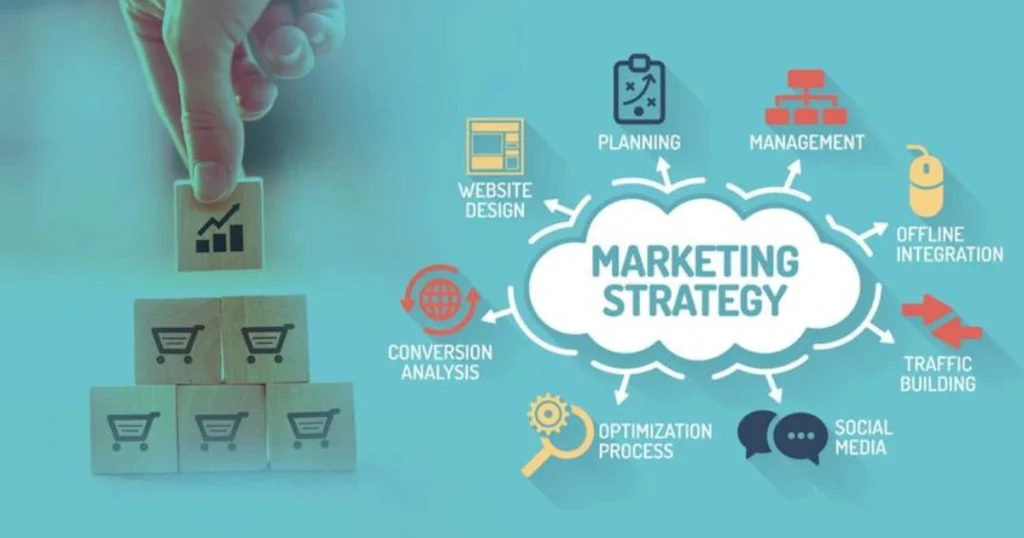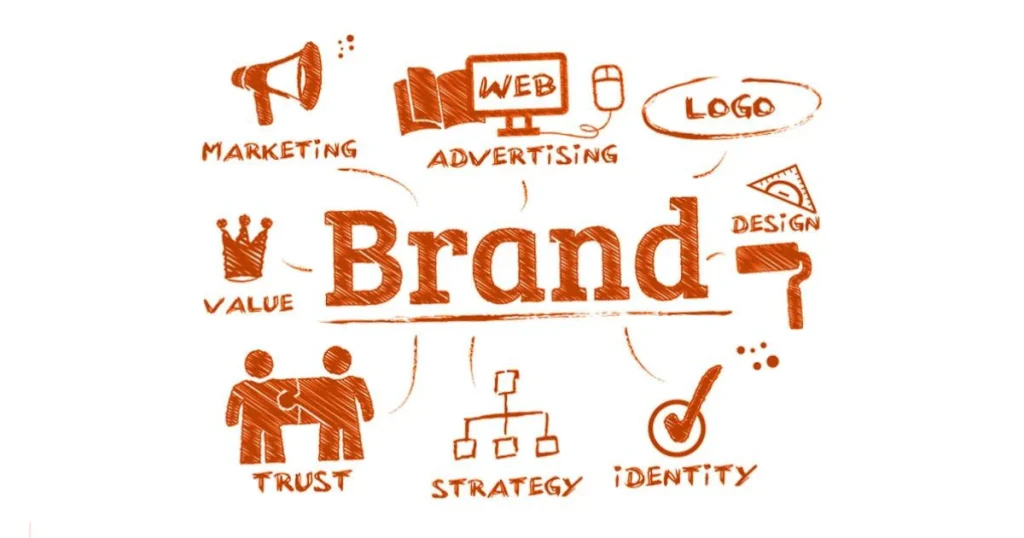There are many marketing strategies that retailers spend a significant amount of their annual budget on, but here are five common ones:
Digital Marketing:
As more and more consumers turn to online shopping, digital marketing has become essential for retailers. This includes tactics such as search engine optimization (SEO), pay-per-click advertising, email marketing, social media advertising, and influencer partnerships. The cost of digital marketing can vary greatly depending on the scope and reach of the campaign, but it typically makes up a large portion of retailers’ marketing budgets.
Traditional Advertising:
Despite the rise of digital marketing, traditional forms of advertising such as television, radio, print ads, and billboards still hold value for retailers. These methods are especially effective for targeting local audiences and can be a significant expense for retailers, particularly during peak shopping seasons.
In-store Promotions:
Retailers also spend a considerable amount of their marketing budget on in-store promotions and events. This can include sales, discounts, giveaways, and other incentives to attract customers to their physical stores. These promotions are meant to drive foot traffic and increase sales but can also help build brand loyalty and awareness.
Loyalty Programs:
Retailers understand the value of retaining existing customers, and loyalty programs are a popular strategy for achieving this. These programs can include offering rewards, exclusive discounts, or special perks to frequent shoppers. The implementation and maintenance of these programs can be costly but can lead to long-term benefits for retailers.
Customer Relationship Management (CRM):
CRM is a marketing strategy that focuses on building and nurturing relationships with customers. This can include tactics such as personalized email campaigns, targeted promotions based on customer data, and follow-up communication with past customers. While CRM may not have an immediate return on investment, it is crucial for maintaining customer loyalty and driving repeat business.
Overall, these five strategies make up a significant portion of retailers’ marketing budgets and are essential for staying competitive in the ever-evolving retail industry. However, it’s important for retailers to continually evaluate and adjust their marketing strategies based on changing consumer behavior, market trends, and their own budget constraints. By investing in these tactics strategically, retailers can effectively reach and engage their target audience while maximizing their return on investment.
Here are five such strategies:
While the retail market is competitive, the implementation of certain strategies can help retailers stand out from their competition and create a niche for themselves.
Product Differentiation:
Offering unique products or adding unique features to existing products can help a retailer distinguish themselves from their competitors.
Exceptional Customer Service:
Providing a high level of customer service can help retailers win customer loyalty and positive word-of-mouth referrals, both of which can give them an edge over their competitors.
Competitive Pricing:
Retailers can employ a competitive pricing strategy to attract cost-conscious customers. However, they must be careful to ensure they’re not compromising on profitability.
Innovative Marketing:
Innovation in marketing can help retailers capture the attention of potential customers. This could involve using newer marketing channels, or unique and creative approaches to traditional marketing methods.
Exploiting Retail Technology:
Adopting the latest retail technologies can help retailers streamline their operations and provide a better shopping experience for customers. This could involve deploying AI, VR, or AR technologies, or optimizing their online shopping platforms.
Remember, the key to success in a competitive retail market is to adapt and evolve based on changing consumer preferences, market trends, and technological advancements.
When it comes to allocating a marketing budget, businesses can choose from several methods.
Each method has its own merits and drawbacks, and the choice largely depends on the specific needs and circumstances of the business. Here are four common methods:
- Percentage of Sales: This is one of the most common methods of setting a marketing budget. Businesses allocate a certain percentage of their actual or projected sales to marketing. The percentage can vary depending on the industry, the size of the business, and its growth stage.
- Competitive Parity: In this method, businesses base their marketing budget on what their competitors are spending. This ensures that the business stays competitive, but it doesn’t necessarily take into account the business’s own needs or goals.
- Objective and Task Method: With this method, businesses set their marketing budget based on the specific objectives they want to achieve. This involves identifying the necessary tasks and resources required to reach these objectives, and allocating a budget accordingly.
- Affordability: Some businesses may choose to allocate their marketing budget based on what they can afford. While this may seem like a logical approach, it can be limiting and may not allow for optimal marketing efforts.
Ultimately, businesses must carefully consider their goals, resources, and competitive landscape when determining their marketing budget allocation method. It’s also important to regularly review and adjust the budget as needed to ensure maximum effectiveness and return on investment.
What are the five strategies to overcome competition in the market?
In a highly competitive marketplace, businesses need to develop unique strategies to overcome competition and establish a strong foothold. Here are five such strategies that can prove effective:
- Focused Differentiation: By focusing on a specific market segment or offering a niche product or service, businesses can cater to needs that are unmet by their competitors. This strategy works best when the business has a deep understanding of its target audience’s specific needs and preferences.
- Cost Leadership: This strategy involves becoming the low-cost provider in the market. While it may lead to thinner profit margins, cost leadership can also attract a large number of customers and can be combined with other strategies for maximum benefit.
- Innovation: A business can distinguish itself from competitors by being innovative in its products, services, or processes. This could involve the development of new technologies, the implementation of novel business practices, or the creation of groundbreaking products.
- Strong Branding: By building a strong and recognizable brand, organizations can create an emotional connection with customers that can lead to increased loyalty and customer retention.
- Superior Customer Experience: Providing an exceptional customer experience at every touchpoint can help businesses stand out from their competition. This involves not only offering high-quality products or services but also ensuring that all interactions customers have with the business are positive.
Remember, the most effective way to overcome competition is to continually adapt and evolve based on changing market conditions and customer preferences.
Bottom Line
In essence, navigating through competition requires strategic planning, agility, and a profound understanding of the target market. Businesses should remain vigilant to the ever-changing dynamics of their industry, ready to adapt their strategies as needed. Whether it’s through differentiation, cost leadership, innovation, branding, or superior customer experience, the goal is to create a unique value proposition that resonates with customers. In doing so, businesses are not only able to survive in a competitive landscape but also thrive, making sustainable progress toward their long-term objectives.
Read Also:
- The testing process within Zillexit software 2024: Optimizing Quality Assurance
- The Future of Blogging after ChatGPT: Why Human Bloggers Still Matter
- Unveiling the Essentials of Entrepreneurship: Navigating the Path to Success
- 11 Most Important Questions to ask a Digital Marketing Agency
- Mastering Dynamic Digital Precision: Digital Marketing vs Web Development
- Unveiling Lucrative Avenues: The Best Niches for Digital Marketing Agency
- Affiliate Marketing: Boost Your Online Income
- 10 Proven Ways to Earn Money Online
- Unveiling the Top Online Content Marketing Services for Earning Money
- What Is Freelance Digital Marketing?
- Tax Loopholes For Small Businesses



I was examining some of your blog posts on this website and
I believe this web site is real instructive! Keep on putting up.Money from blog